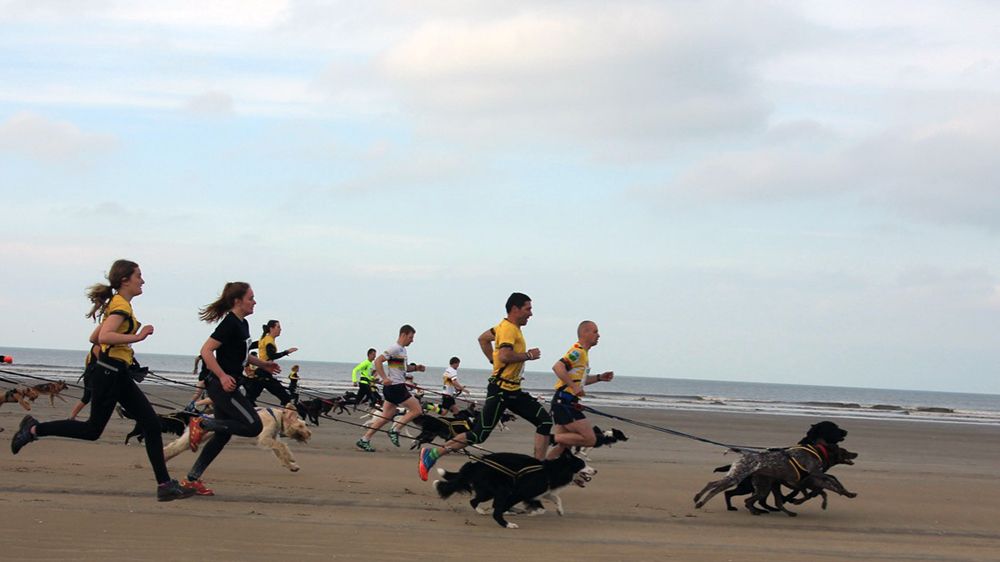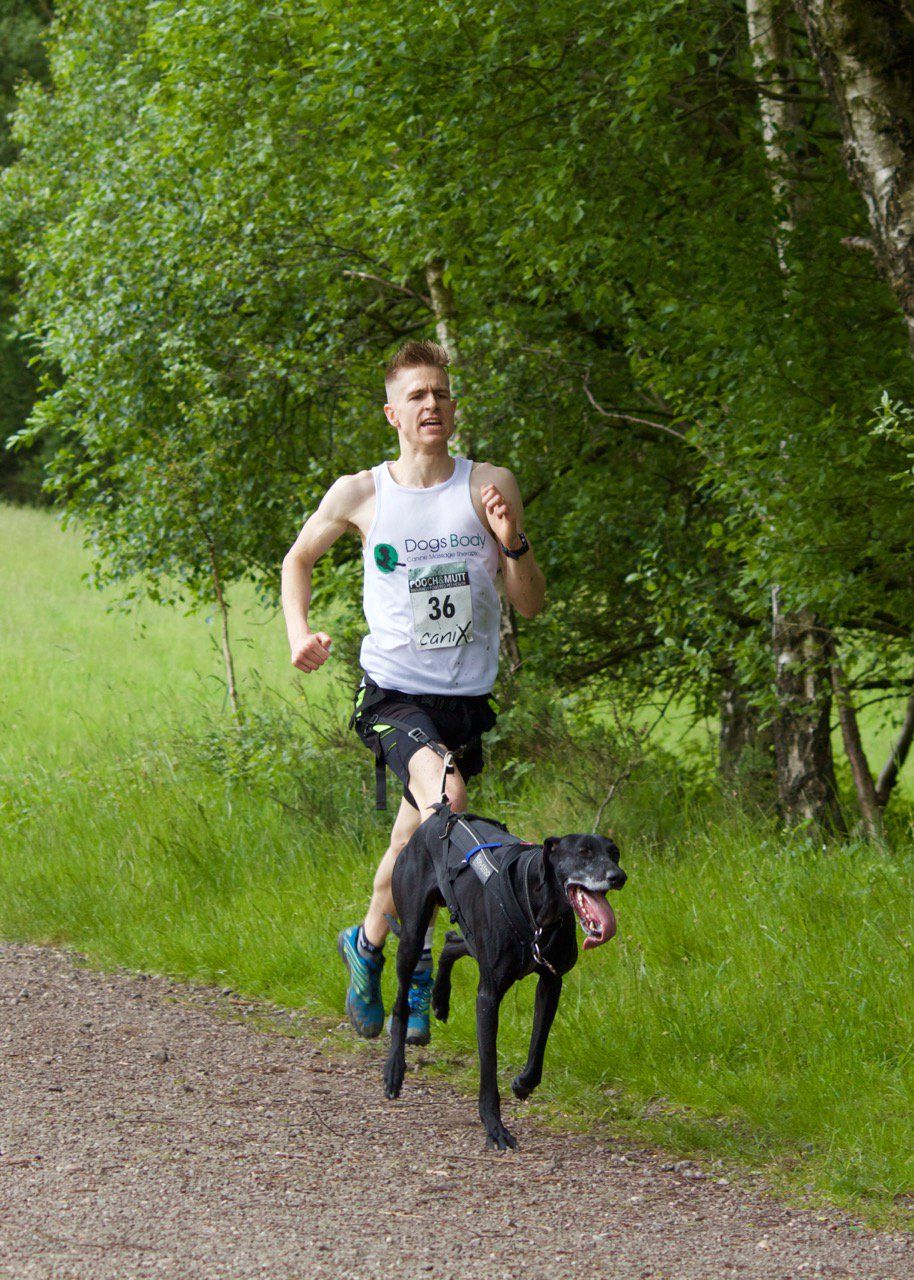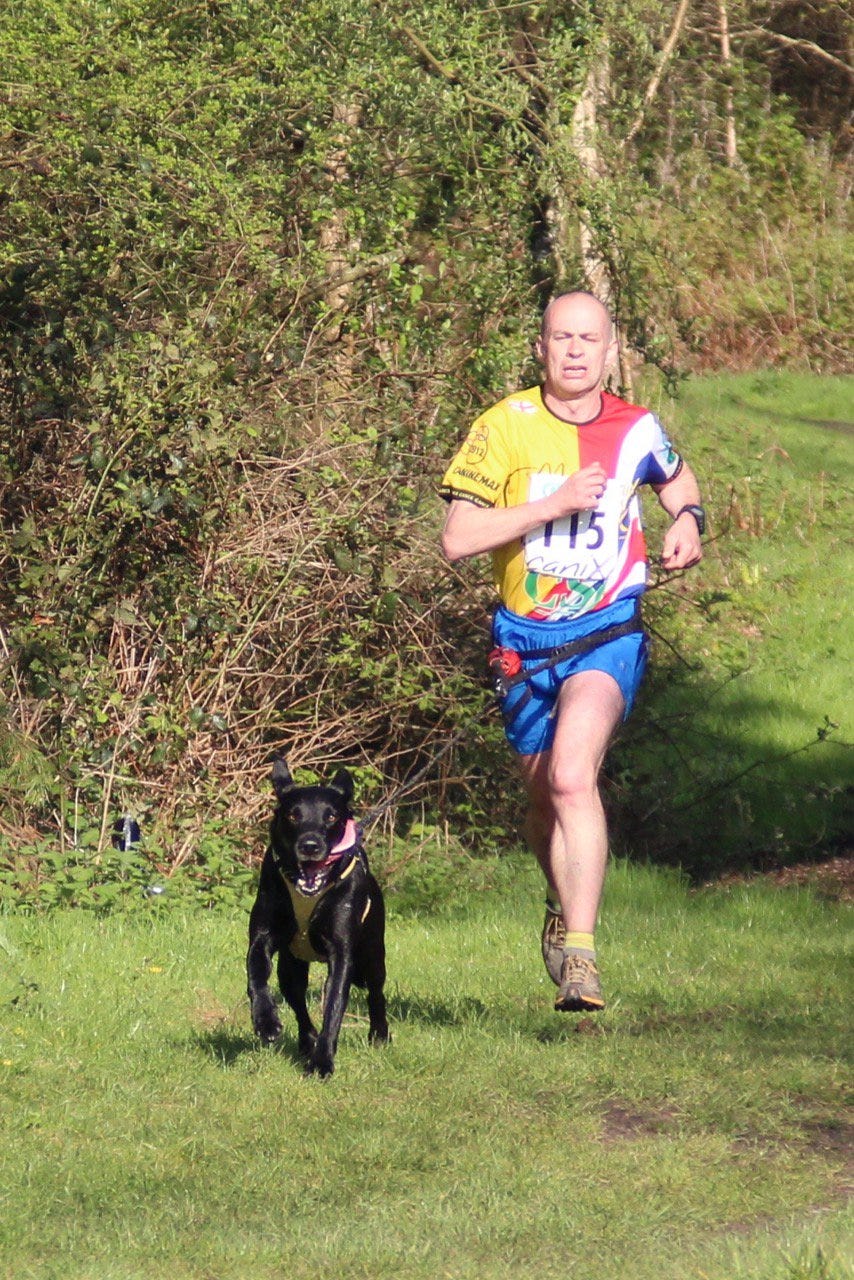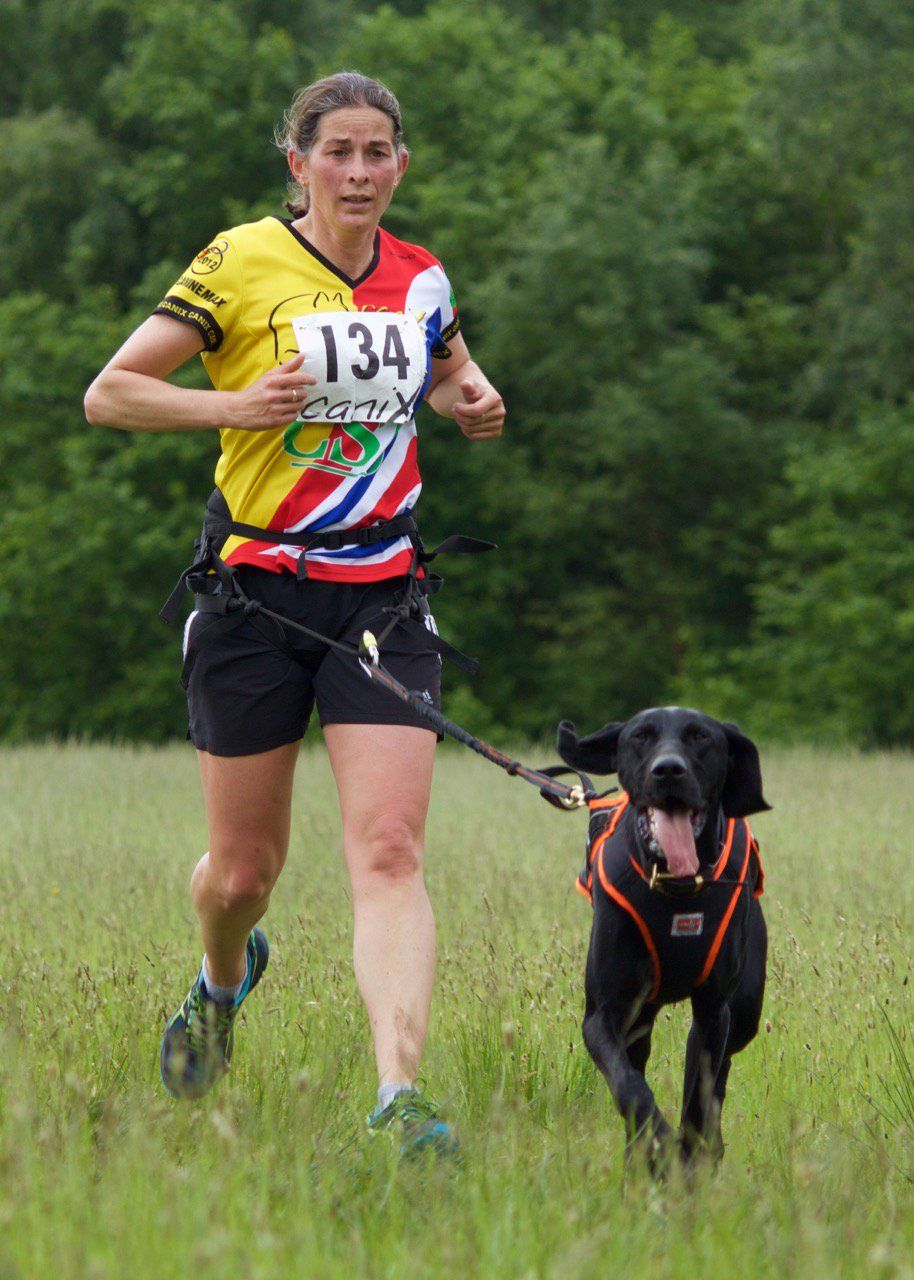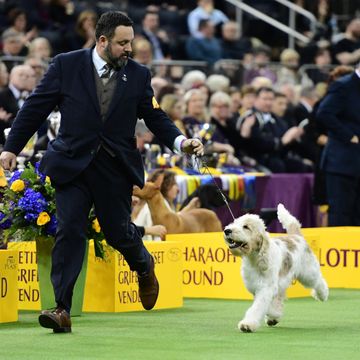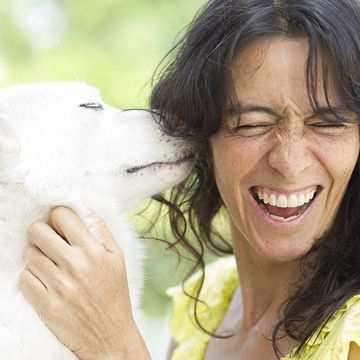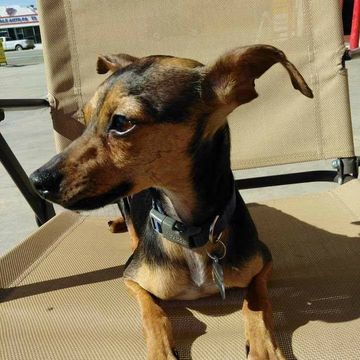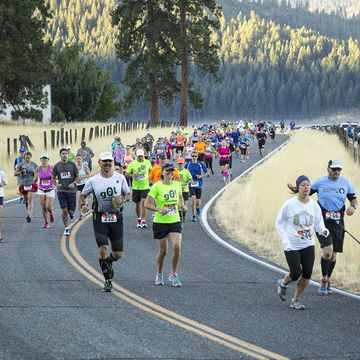When Ben Robinson won a 5K on November 18 near Birmingham, England, he did so in 12:24, besting the longstanding world record for the distance by 13 seconds.
Robinson’s time won’t appear in any track and field record books. That’s because his was a dog-powered effort, as Robinson was tethered via bungee cord to his pooch, Blake. The pair averaged 3:59 pace for the 5K.
This sort of canine-propelled racing strategy may sound strange, but only if you haven’t heard of canicross, a hybrid sport combining elements of cross-country running and dog sled racing. Canicross is growing increasingly popular in mainland Europe and the U.K., where it developed as a stand-in for sled racing in an environment where snowfall is rare.
But most Americans are unfamiliar with canicross—and how a runner, like Robinson, who normally runs around 15 minutes for 5K can be pulled to a dog-aided sub-13-minute time.
Join Runner's World+ for unlimited access to the best training tips for runners
It begins with a new type of leash, said Dawn Crook-Richards, owner and event organizer for CaniX, a U.K.-based group that puts on canicross races.
Dogs wear specially designed harnesses that allow them to pull from the chest. This means they generate more power, and they also control the amount of tension on the bungee line attached to the human runner’s waist belt. This configuration also keeps both of the runner's hands free, which improves balance—a must if the dog is especially fast, strong, or easily led off course by enticing smells.
Robinson and Blake approach a perfect level of canicross symbiosis. Robinson’s 5K personal best is a brisk 14:59—so while he slows Blake down, Blake helps him speed up. Faster runners don’t automatically make for faster canicrossers, however.
“You can’t just put an elite runner with a high class dog and expect them to do well,” Crook-Richards said. “Running style changes in canicross as you are being physically moved by the dog.”
RELATED: The Best Types of Dogs for Runners
But when dog and runner are a good match in terms of cadence, temperament, and endurance, the human’s performance is improved slightly with every step. When runners are airborne between strides, the dog’s forward momentum plucks the runner forward slightly. It’s a slight tug, but over the course of 5,000 meters, it adds up.
“You do have to have the ability to turn your legs over to keep up,” she said. “But the best runners have the best relationships with their dogs. It’s a team sport—though the human is usually the weakest link in the team.”
That’s certainly true in the case of Robinson and his dog. Blake is a Greyster—a mix of German Shorthaired Pointer, Greyhound, and Alaskan Husky—a type of dog bred for sled racing and perfectly suited to canicross. But as the sport grows in popularity in the U.K., so too has the variance in participating breeds, especially at the recreational end of the canicross spectrum.
“We have a whole range of breeds running with us, from standard poodles to Jack Russell terriers to English Springer Spaniels to border collies to German Shepherds and even tiny little border terriers,” Crook-Richards said.
Though your aging, happy Beagle probably won’t tug you along at world record speeds, Crook-Richards stresses that “for the majority of people, their family pet is a perfectly good running partner.”
That means, if you’ve already got a dog, chances are you’re nearly ready to give canicross a crack. The better trained the dog, the more seamless its transition to canicross training partner will be. It may take some time, but a dog prone to bouts of distracted sniffing can learn to run more cooperatively, with practice.
“Experienced dogs respond to directional commands, and often choose the racing line—they’re thinking throughout the event,” said Crook-Richards, adding that for dogs, canicross isn’t simply a means of burning off excess energy, it’s mentally stimulating as well.
As with any competitive venture, there’s the risk of an ambitious human spoiling the fun for their companion.
That’s why CaniX is very clear about what won’t be tolerated on the part of human runners. Humans can’t wear spiked or sharpened shoes. Humans must remain behind their dogs at all times—“this stops a dog that doesn't want to run being made to run.” And anything even resembling verbal or physical abuse from a human is not allowed.
A small Facebook group already exists for Americans looking log some mileage with the family pet.
For beginners to the sport, Crooks-Richards offers these tips:
Take time to get used to the bizarre physical sensation of running with your pet, who is pulling you forward while tethered to your midsection. If you and your pup haven’t reached a canicross stasis, it is not a guaranteed performance enhancer.
And if your canicross training takes you and your pooch over hill and dale, Crooks-Richards recommends grippy trail shoes: “They are a must if you run on a muddy course with a strong-pulling dog—this generally helps you to not fall flat on your face.”
